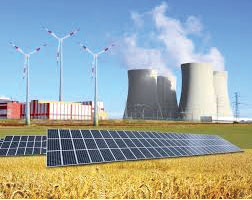
Power Industry: Worldwide is distributed in following verticals
• Power Generation
• Power Transmission and Distribution
Each vertical mentioned above has different approach for Engineering but the need of documentation of these is necessary in every stream. Different standards are followed in the generation of these documents right from International standards to the Company specific standards.
With the Industry 4.0 standards being evolved , it is now only the Engineering aspect of the Power Generation, Transmission or Distribution but also the running plants are getting ready for the future. However the conventional engineering tools are still having difficulty supporting it properly and efficiently. This concerns both the structuring of plants and understanding the neutral SCL. Currently, manufacturer specific tools are used to engineer and Substation Automation (SA) system which covers only specific system level. As a result, designers have to ‘juggle’ with a variety of tools and waste a lot of time on data entry and translation between tools
Engineering Needs:
In the traditional power station engineering is determined by very stringent specifications and a hierarchical structure within plant documentation. In that context, the Reference Designation System for Power Plants (RDSPP) system of identification that has latterly replaced the KKS Standard demands unique definitions, right down to the last device. Using a modern engineering tool, the management of these demands is a convenient and efficient job. However the energy transition has signaled the arrival of a radically different energy supplier environment that is rapidly surpassing the traditional tools.
In future, energy will increasingly come from many de-centralized units, some of them very small; biogas plants run by agricultural companies, individual wind turbines, small combined heat and power systems in private homes, solar roofs or the battery of an electric vehicle connected to a charging station are just a handful of examples. Until now there has been no standard that governs how all these distributed energy suppliers should be reliably documented to meet the requirements of the energy supply sector. It is not yet even established for those parts of major, professionally-operated photovoltaic arrays or wind farms that are not laid out for direct grid supply.
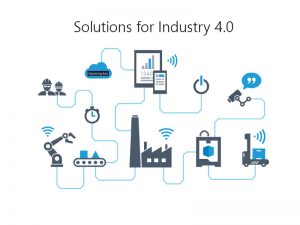
Each to their own plan :
Solar panels, cables, combiner boxes for individual solar array strings and their transmission circuits, wind turbines or CHP stations are documented by their manufacturers using a range of different tools, identification systems and standards. Even the levels of detail in the representations differ. For example, because all solar panels are the same, a multiple representation for individual panels does not help. However, their layout including the cabling of the entire area and where the cables meet up must be expressed in a precise wiring diagram. By contrast, for other types of generating plant, documentation is required for every single one of the many different devices in use, complete with their connections. Regardless of the context, be it for diversified suppliers combining similar tasks from different departments into new organizational units, for example for planning urban infrastructure solutions, or for specialized plant builders or regional suppliers: manufacturers and operators are equally affected by the need to homogenize their tool environments. Staff resources can be deployed with much greater flexibility. IT is free of the demand to update and maintain a whole range of tools, to say nothing of the expertise that is required of service staff for that purpose.
Without clear standardization and a common benchmark it is impossible for local suppliers to manage many decentralized energy sources efficiently. Wind farms are planned and documented according to mechanical engineering standards, biogas plants use different process engineering-oriented tools and a traditional energy supply solution, while photovoltaic systems, at least from the point of view of electrical planning and documentation, are so to speak gigantic cabling projects. Various departments are involved in generation of the various documents. The requirement is to have coordination between all departments at each level. Each department has its own tools for generation of documents. Linking all these departments is a tremendous task for a Project Manager to deliver. This leads to have standardization and a common Tool for all Engineering Documentation.
Dileep Miskin of UL who are partners of Aucotec in India says that the next section defines Enterprise Engineering solution platform viz Engineering Base popularly known as EB. This platform has the important feature of Data centric approach with Database at the backend & supported with Object oriented approach. Once the database is defined all the documents become the representation of this Data could be in a form of GA, BOM, Wiring schematics, SLD or any other representation.
Samples of the Engineering documents –
Single Line Diagram

Panel GA Diagrams
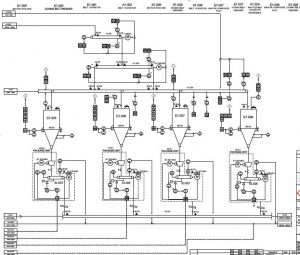
P & I Diagrams
Solution – Engineering Base Platform from UL/AUCOTEC
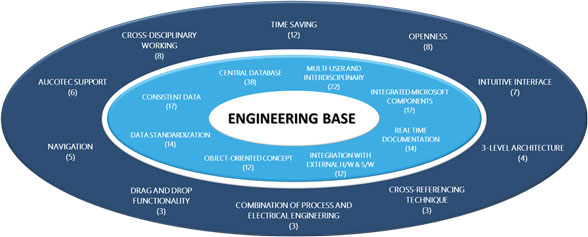
UL Brings in the technology from Germany to Indian Power EPC companies the Total accessibility in demand and Solution
Industry standards of Industry 4.0 demands for a software system with all these and future important features of accessibility, enabling it to handle different structures and identification systems. It moreover enables different types of representations ranging from a single-line diagram in a summary, through layout plans to the full detailed circuit diagram. This kind of planning system is also be capable of supporting peculiarities that widely apply in the energy supply sector such as detailed terminal and terminal block diagrams and typical isolator terminals with auxiliary devices. Engineering Base (EB) has all the required requirements covered in its basic structure. The platform firstly takes advantage of AUCOTEC’s 30 years of experience in the energy supply sector, secondly the three-layer architecture and finally the central data model where all information for all objects is stored, regardless of whether editing is being carried out in a graphic mode, the Explorer or a table. This also creates unique accessibility for different procedures and approaches to work. The integrated Microsoft components such as .NET technology/VBA, Visio and SQL Server enable individual adaptations, simple handling & extraordinarily flexible scaling for multi-user operation and projects of different sizes. UL has implements many solutions encapsulating the benefits of the .net technology
The large group of the Engineering, manufacturing & commissioning teams can work simultaneously on a single project, even from different locations. This will particularly benefit large enterprises and the integration of external data with the SQL database of EB.
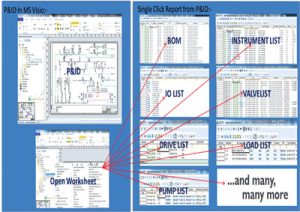
Engineering Documentation:
The document generation in EB can be build as required by each department. All the documents can be linked with each other right from the P&ID to the last device in the control panel. With this the ease this inter-department activity is achieved. The changes are implemented effectively without any blame games. And as a result a complete reliable deliverable documents are generated
EB is a viable solution to overcome the issues faced during documentation
- Single database for multi disciplinary verticals such as Process, Instrumentation, Electrical etc.
- Server/Client installation to facilitate the access of documents from any location whether LAN, WAN or within a country, continent, entire globe.
- Widely used Microsoft – OS at background which helps in easy learning and usage
- Best Quality documentation
- Connectivity to other systems such as ERP/SAP
- Revision Management with comparison reports
- Open architecture to connect with outside world to any open software platforms
- Cloud connectivity for Engineering documents to support access from any part of the world
- Document Management System for End user
Built on Microsoft based products (SQL, Explorer and Visio) Engineering Base platform reduces the learning curve and thus enhances the resource management and minimizes the period of Return on Investments both on the software and human resource front for the users. UL can contribute in getting the users trained in quicker time.
Support for IEC 81346:
EB supports IEC standard 81346 which prescribes plant construction as an object model with three independent views “Product”, “Function” and “Installation Location”.
It is essential for international tenders. Aucotec has succeeded in being the first provider of a system that not only graphically maps these views, but also provides them in an editable and purely alphanumerical form to full depth.
Its database-driven nature and object orientation supports the IEC standard perfectly. A second symbol library is then unnecessary. The system uses the existing, centrally managed symbol configurations, which are adapted, if necessary, to the IEC virtually at the press of a button or click of the mouse but which can also be used in other standards in parallel. Furthermore, EB enables the integration of external or altered projects into the existing IEC object model simply via drag & drop concept. The supplied cabinet with all its built-in devices can be included in the location structure with just a few clicks.
Web Communication Server for Industry 4.0
The new Web Communication Server of Engineering Base (EB) ensures direct communication of external. Hence the ERP and EDM/PDM systems forward their data directly to the business logic of EB’s multi-layer architecture. This ensures that information can be exchanged at any time. The data model feature of EB is always updated with external additions and can display these changes without additional user interaction.
This direct M2M communication is one of the preconditions to the ability to excel in engineering for Industry 4.0. The Internet of Things, so the required interconnection, cannot be achieved without Web technology. The WCS uses globally valid standards such as WSDL, SOAP, RESTful API, JSON and WCF, & there is no extra work involved for the IT Department. Mobile access to the engineering data via established Web standards makes predictive maintenance convenient and always up-to-date, without the detour via client applications.
Way forward:
Dileep Says “The software is extremely useful for any Industry who is in Power Generation, Distribution and Transmission Engineering. It is also equally useful for the existing/ functional Power plants to keep their plant documentation up to date using the Digital Twins Technology. The easy navigation between the documents helps to finding out the correct route to diagnose the problems thus reduces the down time
The Engineer can modify the documents as per the changes he has done in the plant & hence the documents really become an As Built or As Maintained document achieving an Active digitization of the plant documentation with latest updates”
Substation Configuration Tool (SCT) in Engineering Base Challenge
Substations for the distribution of electrical power contain numerous devices such as control and protection systems. They must communicate with each other in order to coordinate the switching operations in the plants. The accompanying comprehensive IEC standard 61850 is the consequence of digitizing the industry with increasing intelligence and complexity in today’s substations. In addition to the uniform description of the plant structure, the standard also determines the type of communication in order to increase plant availability. The decisive factor is the IEC specification for a manufacturer-neutral description of a plant. For example, according to IEC 61850-6, the description of the configuration and the structures of the protection and control technology in digital substations should be carried out in the SCL format (Substation Configuration Language). Thus, the standard introduces an effective and unique feature for the area of substation automation (SA). However, conventional engineering tools are still having difficulty supporting the IEC properly and efficiently. This concerns both the structuring of the plants and the understanding of the neutral SCL. Currently, manufacturer-specific tools are used to engineer an SA system, each covering only a specific system level. As a result, designers have to “juggle” with a variety of tools and waste a lot of time on data entry and translation between the tools.
Solution : The communication standard IEC 61850 promises to simplify this process. With its object-oriented data model and formal description language, it supports reusability, component interoperability, and a consistent engineering process. The Substation Configuration Tool (SCT) is the consistent implementation of the IEC 61850 requirement for a manufacturer-neutral configuration tool based on SCL. From the graphical input of the primary technology to the modelling of abstract function nodes and data objects to the linking of plant model and system components, SCT generates the target system-independent configuration data for station control systems in compliance with the standard. This way, SCT enables integrated system engineering, and valuable data is archived securely for the future in standardized format. In cooperation with H&S and AUCOTEC, SCT has been seamlessly integrated into the database-based platform Engineering Base (EB). The result: an optimal combination of electro technical planning and the standard-compliant description of the switchgear according to IEC 61850-6 in a user-friendly interface. This makes it easy to create single-line diagrams in EB. The synchronous coupling enables EB to transfer the plant model to the SCT. This creates the SSD file in the further workflow, which is synchronously assigned to the respective object in EB in the same work step
Advantages : Data for the description of digital substations required by IEC 61850-6 does not need to be entered and maintained redundantly. Consistent standardization means that system builders and operators only need one system configuration tool. This means much less training and maintenance input and easy interchangeability of the devices. With SCT the data for the specification file can be retrieved from Engineering Base at any time and transferred to the IEC 61850-compliant engineering process for the plant configuration. The ease of use and automated creation of the ICD files shields the user from the complexity, simplifies the configuration and facilitates the concentration on the application itself. The process chain thus becomes significantly more consistent, from the overview circuit diagram to the engineering details of the devices. Adjustment errors are avoided and users save both time and money. Data and documentation are sustainable in the long term and thus ensure a high degree of security of investment.
Aucotec hosts Power Day in Germany:
Energy generators, plant engineers, network operators and power distributors met at “Power Day” in Hanover at the invitation of the Aucotec. The main theme was the future of engineering in the power sector, which is undergoing a massive change. Talks by RWE, Emerson, Siemens and Braunschweiger Netz GmbH gave delegates a comprehensive insight into the challenges of different fields and suggestions for links that will create synergies, between P&I, electrical engineering and control system software.
“Third Generation CAE”
Kurt Oswald, Senior Key Expert from the Siemens Energy Management Division in Erlangen gave a comprehensive survey of the relevant standards and the demands and opportunities for implementation in engineering – from the first plant layouts at the planning stage through to operation and repair. Following on from the digitized CAD drawing and the circuit diagram with derived lists, he described the EB engineering model as CAE of the ‘Next generation’ that has gone beyond the traditional file structure. This is an important reason for Siemens’ deployment of EB as a central element of engineering in the field of energy transmission. “Today’s demands on documentation cannot be fulfilled with the tool we have used hitherto, whose basic concept dates from the 1980s,” explained Kurt Oswald. As an example, he cited reference designations complying with IEC 81346 and the US ANSI standard. In addition, the opportunities for process optimization in their legacy tool had been exhausted.
 Time saved with the fun factor
Time saved with the fun factor
The closing talk by Michael Wedde- head of the “Plants” department at Braunschweiger Netz GmbH highlighted the network operators’ view of engineering. Starting with the first steps on a 380kV control panel pilot project for TenneT, up to today’s position after several years’ experience with EB’s energy and utilities sector module (EVU), Wedde illustrated a variety of means by which more modern processes provide significantly greater efficiency. In the case of variant handling, the number of templates could be reduced by about two-thirds. Standardization, e.g. through the use of reports, on its own achieve a reduction in project planning time of about 20%. He was visibly impressed by the motivational factor that the platform brought with it. “The staff really enjoys working with it,” he believes. “What Aucotec have managed in recent months is massive, it really is dynamic! EB Power EVU can already be used in a range of scenarios and we can see from the breadth of today’s presentations here that the system has what it takes to be the sector-wide solution for the whole energy sector. Company is going to expand its using EB!”
All speakers concurrently agreed their assessment of the platform’s sustainability, and delegates also confirmed the desire for a sector-wide standard.
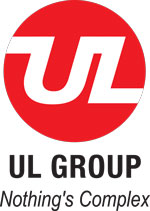
For more information
Web: www.ulepl.com



